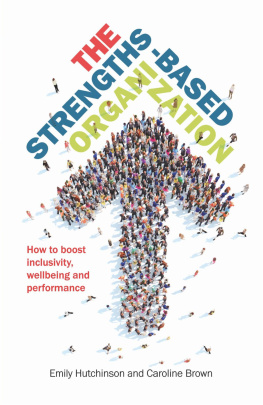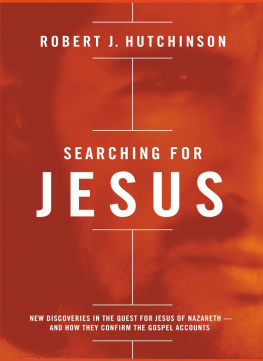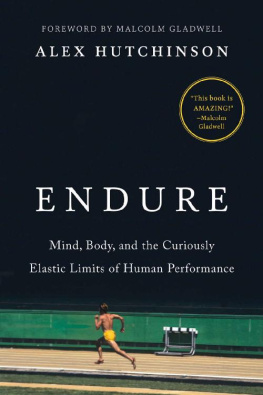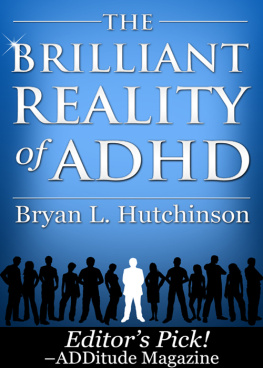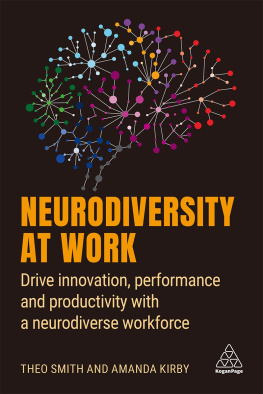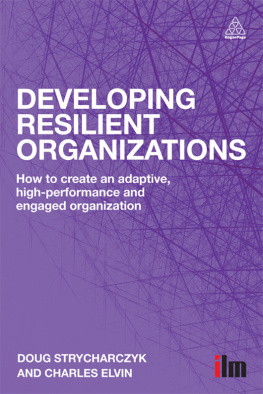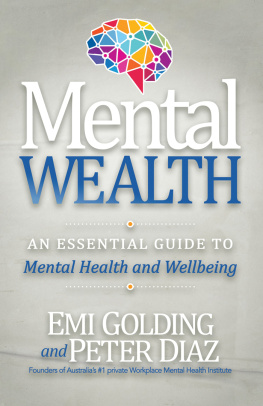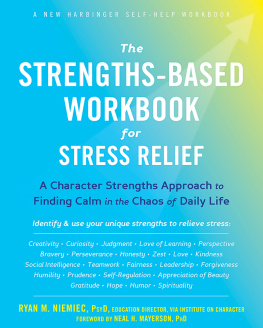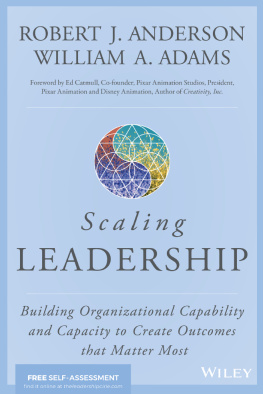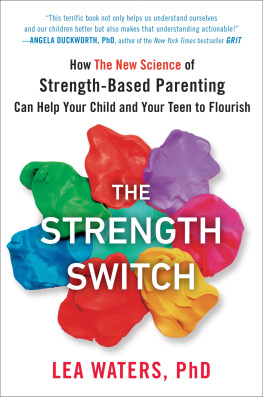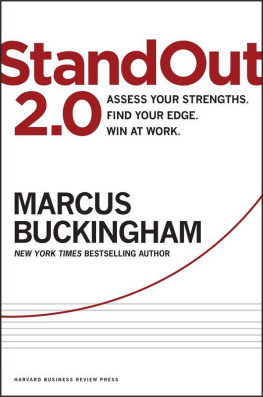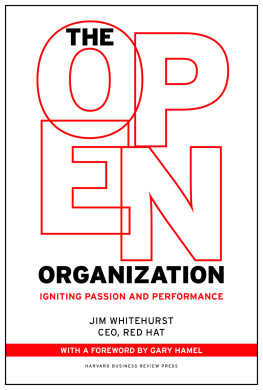The modern world seems to change at an increasingly rapid pace. Technology evolves and management fads come and go. Throughout it all, the benefits of a strengths-orientation is a constant. It is as true today as it was 20 years ago (only there is more research support now!). In this book, Hutchinson and Brown explain the key concepts and more importantly offer distinctive and specific guidance for applying them at work.
Dr Robert Biswas-Diener, author of The Upside of Your Dark Side (2014)
Hutchinson and Brown describe the strengths-based approach as a gold mine. So too is this book, full of valuable insights, practical advice and powerful examples. The authors are not only experts in the field, they are also experienced practitioners who vividly illustrate how to apply this approach. If there was ever a time to adopt a strengths-based approach to individual and organizational development, as an antidote to these turbulent times, it is now!
Dr Jolyon Maddocks, author of Emotional Intelligence at Work: How to Make Change Stick (2014)
Ive worked with Caroline and Emily for many years and I am proud to say they have absolutely achieved what they set out to do by making a scientific and practical guide to strengths use. If you only apply a few of their brilliant suggestions, you will make a difference to your organizations engagement and performance. I cant wait to recommend this to our strengths practitioners.
Trudy Bateman, Head of Strengths Profile, Cappfinity
There is a refreshing absence of unpersuasive rhetoric and an abundance of concrete guidance based on evidence, tempered by extensive experience. This is the foundation upon which this books strength is built.
Donald Ridley, Associate Dean of Oxford Brookes University
How do we ensure the greatest levels of staff motivation, staff engagement and staff empowerment? Many would rightly see the answer to this question as the holy grail of company success and over the years we have taken steps forward in our understanding of how to do this as we implement an ever-increasing body of research and experience. The strengths-based approach allows not just steps but leaps forward and should be essential reading across any business.
Chris Ball, Managing Director, Nuclear and Power EMEA, Atkins, a Member of the SNC-Lavalin Group
Caroline and Emilys strengths-based approach encouraged me to change the charity board from one of internal criticism to one of positivity, creativity and growth. This is enabling the charity to support more people in need (currently Armed Forces veterans, NHS staff, plus children and young people) to improve their emotional health and quality of life, through the powerful connection with horses.
Heather Hardy, CEO, HorseHeard, registered charity
At Xytal, our culture is everything. We pride ourselves on having the right people in our business who are value-driven and passionate about what we do. Because we recognize the importance of this, we take account of how people feel in our recruitment, in our team composition and in the way that we deliver our business strengths-based approaches enable us to do this.
Richard More, Chairman and CEO, Xytal
Two words resonated with me throughout the book, which I really liked experiment and sustainable. Having been on the other side of change, this is a very clever, almost understated approach, which is highly effective.
Julianne Antrobus, Partner, Global Head of Nuclear, PA Consulting
A brilliant, tactical book that is underpinned with enough academic rigour to satisfy the scientist and inspire the curious. This book is for you if you want to be known for what you think as well as how you do things, whatever the subject might be!
Louise Lawrence, Head of Discipline, Intelligent Transport, WSP
Using strengths profiling has enabled the team to work together in a different way. It has been a catalyst for people to shine and excel, delivering great work with a smile. This book is a great summary of that approach and provides a guide to how to get started.
David Hall, CEO, Totalkare
After our management buyout I was looking for a different way to engage our leaders and think about our people as we planned for growth. The strengths approach intuitively made sense to me and has enabled us to build better relationships and really understand each other within the leadership team. We are known for being a business which is strongly value-based working with strengths is all about authenticity and reinforces this. If you want to understand how to introduce strengths in your organization, this book is a great place to start.
Mike Lord, Chairman and CEO, Stiltz
First published in Great Britain by Practical Inspiration Publishing, 2021
Emily Hutchinson and Caroline Brown, 2021
The moral rights of the authors have been asserted
ISBN 9781788601542 (print)
9781788601535(epub)
9781788601528(mobi)
All rights reserved. This book, or any portion thereof, may not be reproduced without the express written permission of the authors.
Every effort has been made to trace copyright holders and to obtain their permission for the use of copyright material. The publisher apologizes for any errors or omissions and would be grateful if notified of any corrections that should be incorporated in future reprints or editions of this book.
Graphics by Angus Duckworth of Cat-Rabbit Graphics.
Author photos by Jenny Stewart.

Contents
Acknowledgements
We have written this book truly collaboratively. First, we are writing as joint authors this is known to be hard to do but is so rewarding when it works. Second, we always work in partnership with our clients, and not only have they co-created the material, many have also taken the time to review and edit, which has made such a difference. Third, we consulted and had input from psychologists and strengths experts to check on our facts and interpretation of research. We are grateful to you all!
Thanks to Cappfinity, in particular. We were initially inspired by positive psychology and the potential impact that applying a strengths approach could have for organizations when attending their 2007 conference. Since then, although we have used various profiling tools, we have grown to appreciate Cappfinitys Strengths Profile for its academic basis and ease of access and application in a wide range of settings.
At the same conference, everyone was talking about the one presentation we missed, prompting us to connect with Clive Hutchinson, then the owner and company leader at Cougar Automation. Clives story of how he transformed Cougar into a strengths-based organization is truly inspirational, and we have enjoyed many good conversations over the years which have helped us to translate the theory into practical application.
We also want to thank Atkins, a Member of the SNC-Lavalin Group, for letting us experiment and play with strengths, both with individuals and with teams, over many years. In particular, we would both like to give our heartfelt appreciation to Chris Ball, who has supported, sponsored and encouraged us to think bigger and try more transformational interventions. He has consistently provided the psychological safety for us to develop and support his business.
Next page
